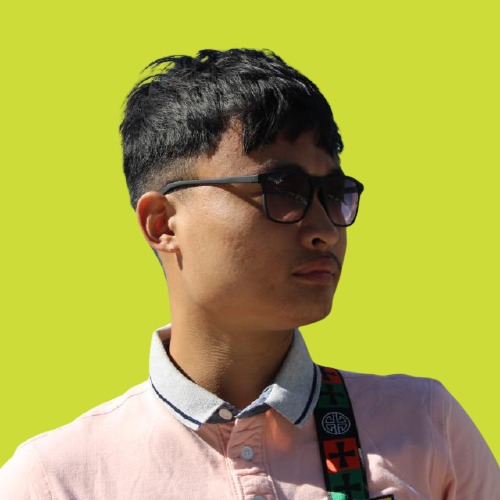
 Data Structure
Data Structure Networking
Networking RDBMS
RDBMS Operating System
Operating System Java
Java MS Excel
MS Excel iOS
iOS HTML
HTML CSS
CSS Android
Android Python
Python C Programming
C Programming C++
C++ C#
C# MongoDB
MongoDB MySQL
MySQL Javascript
Javascript PHP
PHP
- Selected Reading
- UPSC IAS Exams Notes
- Developer's Best Practices
- Questions and Answers
- Effective Resume Writing
- HR Interview Questions
- Computer Glossary
- Who is Who
How to group multiple Polylines into a single object using FabricJS?
We can create a Polyline object by creating an instance of fabric.Polyline. A polyline object can be characterised by a set of connected straight-line segments. Since it is one of the basic elements of FabricJS, we can also easily customize it by applying properties like angle, opacity, etc. For grouping multiple Polyline objects, we can use the toGroup() method.
Syntax
toGroup(): Fabric.Group
Example 1: Creating an Instance of fabric.Polyline() and Adding it to our Canvas
Before seeing how we can group multiple objects into one, let's see a code example of how we can add a polyline object to our canvas. The only required parameter is the points Array whereas the second argument is the optional options object.
<!DOCTYPE html>
<html>
<head>
<!-- Adding the Fabric JS Library-->
<script src="https://cdnjs.cloudflare.com/ajax/libs/fabric.js/510/fabric.min.js"></script>
</head>
<body>
<h2> Creating an instance of fabric.Polyline() and adding it to our canvas </h2>
<p>You can see that the polyline object has been added</p>
<canvas id="canvas"></canvas>
<script>
// Initiate a canvas instance
var canvas = new fabric.Canvas("canvas");
canvas.setWidth(document.body.scrollWidth);
canvas.setHeight(250);
// Initiating a points array
var points = [
{ x: 30, y: 50 },
{ x: 0, y: 0 },
{ x: 60, y: 0 },
];
// Initiating a polyline object
var polyline = new fabric.Polyline(points, {
left: 100,
top: 40,
fill: "white",
strokeWidth: 4,
stroke: "green",
});
// Adding it to the canvas
canvas.add(polyline);
</script>
</body>
</html>
Example 2: Grouping all the Polylines using One Click
In this example, we will have a button on clicking which all the Polylines will be grouped into a single object. Thus moving that object will move all the Polylines and it will behave as a single object as you resize or skew too. We will create a function which gets all the objects in the canvas and groups them into a single object.
<!DOCTYPE html>
<html>
<head>
<!-- Adding the Fabric JS Library-->
<script src="https://cdnjs.cloudflare.com/ajax/libs/fabric.js/510/fabric.min.js"></script>
</head>
<body>
<h2>Grouping all the Polyline objects using one click</h2>
<p> Click on the `Group` Button to group all the Polyline objects in the canvas </p>
<canvas id="canvas"></canvas>
<button type="button" onclick="group()">Group</button>
<script>
// Initiate a canvas instance
var canvas = new fabric.Canvas("canvas");
canvas.setWidth(document.body.scrollWidth);
canvas.setHeight(250);
// Initiate a Polyline object
var polyLine1 = new fabric.Polyline([
{ x: 500, y: 200 },
{ x: 550, y: 60 },
{ x: 350, y: 100 },
], {
stroke: "green",
fill: "white",
strokeWidth: 5,
});
// Initiate another Polyline object
var polyLine2 = new fabric.Polyline([
{ x: 300, y: 200 },
{ x: 150, y: 60 },
{ x: 250, y: 100 },
], {
stroke: "green",
fill: "white",
strokeWidth: 5,
});
// Add them to the canvas instance
canvas.add(polyLine1);
canvas.add(polyLine2);
// Function to group all the polyline objects into single object
function group() {
// Get all the objects as selection
var sel = new fabric.ActiveSelection(canvas.getObjects(), {
canvas: canvas,
});
// Make the objects active
canvas.setActiveObject(sel);
// Group the objects
canvas.getActiveObject().toGroup();
}
</script>
</body>
</html>

